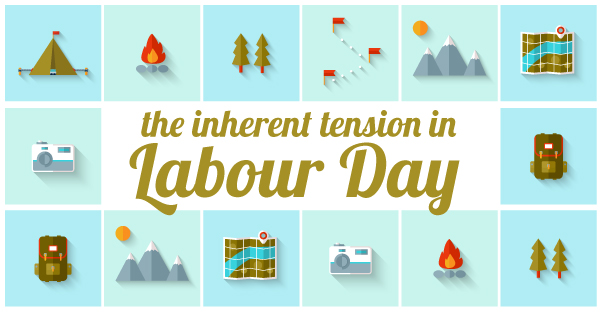This Labour Day, we hope you’ll join us to take part in a celebration of the labour movement and its accomplishments. Like decades past, Labour Day parades will roll through the city of Ottawa and in cities across North America. These parades are steeped in tradition. And they were, for many years, an important communication vehicle.
Labour Day parades were already thriving in many Canadian cities, where Labour Day had been recognized as a civic holiday, before parliament officially recognized it as a national holiday in 1894. According to Craig Heron, professor of history at York University, and Steve Penfold, professor of history at the University of Toronto, labour leaders borrowed the parade model from military processions, which they saw as a legitimizing model.
These parades drew thousands of participants and onlookers alike; they were a cherished opportunity for workers to show off their craft and for the townspeople to get a glimpse of all the crisp uniforms and accoutrements of their trade.
In many ways, it was street theater, according to Heron and Penfold:
"Some proudly carried the tools of their trades – the moulders’ tampers or the boilermakers’ hammers. Others showed off the equipment they worked with – the longshoremen’s huge model ships, the firemen’s glittering wagons and apparatus, and the electrical workers’ blazing electrified floats, among others."
In one 1894 parade in London, Ontario, a group of plumbers worked around a statue of Venus taking a shower.
For the labour movement, these parades were a show de force.
"Organizers hoped these events would build stronger bonds among unionists, inspire the unorganized to join the movement, and impress the general public with the worthiness of their cause."
But unionists’ efforts to have the day recognized as an official holiday – a rare day of rest at a time when Saturday was a workday and national holidays were few and far between – would ultimately work against them.
Soon, labour leaders would decry those who chose to spend time at the pool hall rather than take part in a celebration of the working class. Labour Day activities would have to compete with long weekends at the cottage and other options for holiday fun.
And perhaps that’s why Labour Day Parades lost some of their luster – lost a bit of oomph. A day of leisure isn’t exactly synonymous with political action. But you might just find the Ottawa celebrations in the slim overlap of this Venn diagram.
In Ottawa, the Labour Day Parade will be followed by family-friendly activities: bouncy castles, face-painting and pony rides abound. A mix of decades-old Labour Day traditions and leisure. CAPE intends on participating for the first time this year.
We hope you can join us; we’d love to see you there!
Labour Day Monday: September 7, 2015
Meet at 12 p.m. at City Hall and march to McNabb Park. The Ottawa District Labour Council is providing free activities and a barbecue.
Bring your families!
--------------------------
This article was heavily informed by the great work of Craig Heron and Steve Penfold; co-authors of The Workers’ Festival: A History of Labour Day in Canada. Professor Heron is the author of several books on the Canadian labour movement, including The Canadian Labour Movement: A Short History.



